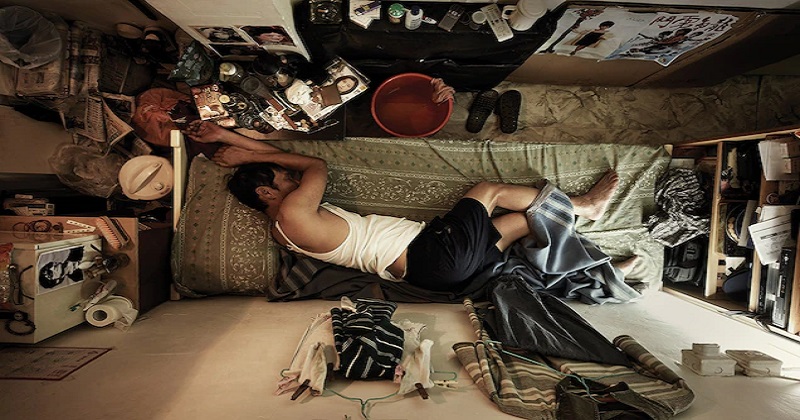
Homes like the coffin are tiny apartments in a country that has been unable to cope with the waves of people moving to its big cities. These individuals reside in these improvised houses in search of a better future. There has been an increase in demand for apartments in the country, causing a severe crisis. Hong Kong has become one of the world’s most expensive cities per square meter because of this.
The beginning:
Coffin homes appeared in the 1950s. Originally occupied by Chinese immigrants, these buildings were assigned to them by their bosses.
Asia’s most expensive housing market:
Asiatic cities have been the most expensive locations for apartment rentals for years. A house in Hong Kong takes on average four years and eight months to obtain. An estimated 200,000 people live in what is known as coffin homes in Hong Kong.

Defining urban identity:
Rents in Hong Kong are so high that the city has acquired a questionable reputation for its coffin homes. The desolate coffin homes in Hong Kong taint the city’s overall reputation, even though some of the world’s richest people live there.
Its inhabitants:
Despite the apparent wealth and luxury of Hong Kong, there are an estimated 200,000 people who live in tiny coffin homes. There are about 40,000 children living in these homes.
Hong Kong’s poverty:
A major problem for the government is the lack of affordable apartments for people with low incomes. According to research, one in seven Hong Kong residents lives below the poverty line. It is the amount of income a person needs to acquire the most basic necessities like food, lodging, and hygiene.

A look inside:
Cage homes (or coffin homes) are tiny rooms where people have to live with only the bare necessities. Originally, the coffin homes were constructed from bamboo bars shaped into a bed. Their size ranges from 1.5 to 9 square meters.
Shared toilets:
Coffin homes and illegal huts usually have shared toilets that can accommodate 20 or more people inside large office buildings. This is not only a health issue but also a social problem.
Only for sleep:
Some coffin homes are so small that their inhabitants cannot even stretch their legs completely. They are compelled to spend most of their days outside of the home in public places.

Intensity:
To give you an idea of the size of the space, in 46 square meters (495 square feet) there could be living space for 30 people. Their cubicles could be as small as 60 centimeters by 170 centimeters; that’s 23 by 67 inches in inches.
Coffin homes pose certain risks:
Journalists and researchers have found that living in these circumstances can lead to both mental and physical problems. This is due to the lack of space, the smell of human waste everywhere, the darkness, bed bugs, and other hygienic issues.
NGOs strive to help:
Numerous NGOs have begun hygiene campaigns and are attempting to decontaminate the coffin homes. This will reduce the risk of disease transmission.

Rent of a coffin home:
Although they have an unattractive appearance and lack of space, coffin homes can actually be rather expensive. Rents in Hong Kong can be as high as 200 to 500 Hong Kong dollars (about 24-50 US dollars) per month for some residents.
Worker and marginalized housing:
Ex-convicts, drug addicts, retirees… these are the types of people you will find in coffin homes.
No intimacy:
Entire families with small children find themselves forced to live life in these minuscule spaces. People are forced to share the most intimate moments of their everyday lives with neighbors.
Riches vs. poorer:
Income inequality has contributed to the precarious lifestyle that much of Hong Kong’s population is forced to endure.
A complex problem:
The government offers rental subsidies, but they have so far proved insufficient that the problem persists

For some, too expensive:
Even these small cubicles are too expensive for a portion of the population. According to surveys conducted among their inhabitants, many of them spend more than half of their salaries renting these cages.
Living in a box with latest gadgets:
As with other types of apartments, coffin homes often have the same type of electronic devices. For Hong Kong residents, it’s not the smartphone; it’s the bedroom.
Precarious living:
It is a big part of the problem that these extremely small apartments have become normalized. In Hong Kong the precariousness of life is taken for granted, despite the fact that it is one of the richest places in the world.

Post Your Comments